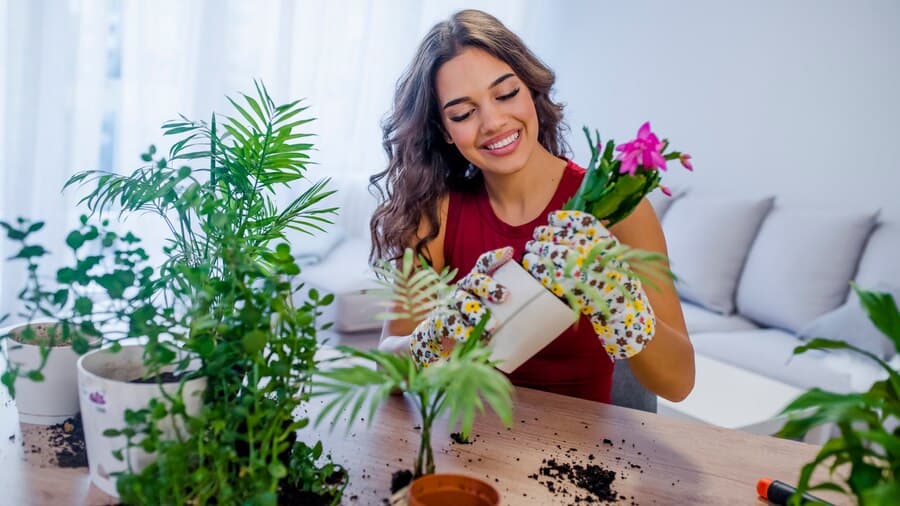A garden filled with a colorful array of flowers can be a source of joy and inspiration for any nature lover. Whether you have a spacious backyard or a cozy balcony, engaging in flower gardening and creating your dream flower garden allows you to express your creativity while connecting with the beauty of nature. In this article, we will explore the art of designing a stunning flower garden, from selecting the right plants to arranging them in harmonious compositions.
Planning Your Garden
Before you start digging and planting, it's essential to have a clear plan for your flower garden. Consider the following aspects:
- Location: Evaluate the available space for your garden. Note the amount of sunlight the area receives throughout the day as different plants have varying sunlight requirements.
- Purpose: Determine the purpose of your garden. Are you looking to create a peaceful retreat, attract pollinators, or showcase a particular flower species?
- Style: Decide on the garden style that appeals to you. Options include formal gardens with structured designs, informal cottage gardens with a relaxed feel, or contemporary gardens featuring minimalist layouts.
- Budget: Set a budget for your garden project, considering expenses for plants, soil, tools, and any hardscaping elements like pathways or decorative features.
Selecting Plants
Choosing the right plants is crucial for a flourishing flower garden. Here are some tips for plant selection:
- Native Plants: Incorporate native plants as they are well-adapted to your region's climate and soil conditions, requiring less maintenance.
- Blooming Seasons: Select a mix of plants that bloom at different times of the year to ensure year-round color and interest in your garden.
- Height and Spread: Consider the mature height and spread of plants to avoid overcrowding and ensure proper spacing for optimal growth.
- Color Scheme: Decide on a color scheme for your garden, whether you prefer a vibrant mix of colors or a more harmonious monochromatic palette.
- Foliage and Texture: Don't overlook foliage plants and those with interesting textures, as they add depth and contrast to your garden beds.
Designing Layouts
Once you have chosen your plants, it's time to design the layout of your flower garden. Here are some layout ideas to inspire you:
- Symmetrical Design: Create a formal garden with symmetrical plantings and geometric shapes for a classic and elegant look.
- Wildflower Meadow: Embrace a naturalistic approach by planting wildflowers in a meadow-style arrangement, attracting butterflies, bees, and other pollinators.
- Color Blocks: Arrange plants in color blocks or themed sections, such as a blue and white garden or a butterfly-attracting garden with bright hues.
- Vertical Gardens: Utilize vertical space with trellises, arbors, or hanging baskets to grow climbing plants like roses, clematis, or morning glories.
- Seasonal Beds: Create seasonal beds that showcase different plant combinations throughout the year, ensuring visual interest across all seasons.
Soil Preparation and Maintenance
Proper soil preparation and ongoing maintenance are key factors for a healthy flower garden:
- Soil Testing: Conduct a soil test to assess pH levels and nutrient content. Amend the soil as needed with organic matter such as compost or aged manure.
- Mulching: Apply a layer of organic mulch such as wood chips or shredded leaves to retain soil moisture, suppress weeds, and improve soil health.
- Watering: Water your garden regularly, especially during dry spells, ensuring plants receive adequate moisture without waterlogging the soil.
- Fertilization: Use organic fertilizers or compost to provide essential nutrients to your plants, avoiding over-fertilization, which can harm plant roots.
- Pest and Disease Control: Monitor plants for pests and diseases, addressing issues promptly with organic pest control methods or plant-safe treatments.
Conclusion
Designing your dream flower garden is a rewarding journey that combines artistry, horticultural knowledge, and a love for nature. By carefully planning your garden layout, selecting suitable plants, and maintaining healthy growing conditions, you can create a vibrant and enchanting outdoor space that brings joy and beauty throughout the seasons.
Whether you are a beginner gardener or have years of experience, experimenting with new plant combinations and design techniques can keep your garden dynamic and engaging. Remember to observe your garden regularly, noting changes in plant growth, bloom times, and overall health to make informed adjustments as needed.
Now, armed with inspiration and practical tips, it's time to roll up your sleeves, get your hands in the soil, and watch your floral fantasia come to life in your very own backyard.
FAQs (Frequently Asked Questions)
1. What are some low-maintenance flowers suitable for beginners?
Some low-maintenance flowers ideal for beginners include marigolds, zinnias, sunflowers, and daylilies. These plants are relatively resilient and forgiving, requiring minimal care once established.
2. How can I attract pollinators to my flower garden?
To attract pollinators such as bees, butterflies, and hummingbirds, plant a variety of nectar-rich flowers such as lavender, coneflowers, bee balm, and salvia. Avoid using pesticides that can harm pollinators.
3. What are some tips for designing a small-space flower garden?
In a small space, prioritize vertical gardening with trellises and hanging planters. Choose compact or dwarf varieties of plants, and utilize container gardening for flexibility and portability.
4. How often should I fertilize my flower garden?
Fertilization frequency depends on the type of plants and soil conditions. In general, apply a balanced fertilizer (such as 10-10-10) during the growing season according to package instructions, avoiding excessive fertilization that can cause nutrient imbalances.
5. What should I do to prepare my flower garden for winter?
In late fall, clean up garden debris, mulch tender perennials for insulation, and protect delicate plants from frost with covers or move them indoors if possible. Drain and store garden hoses, and winterize any water features to prevent damage.





Comments